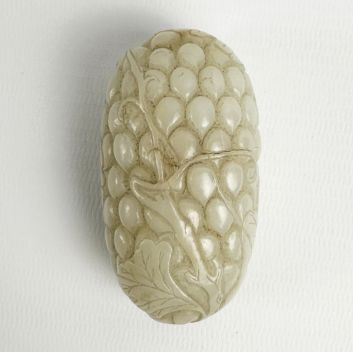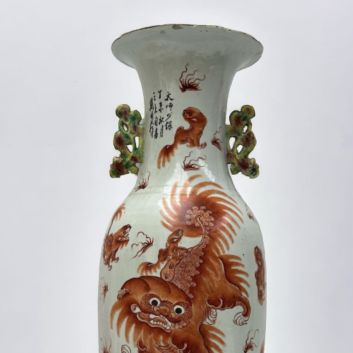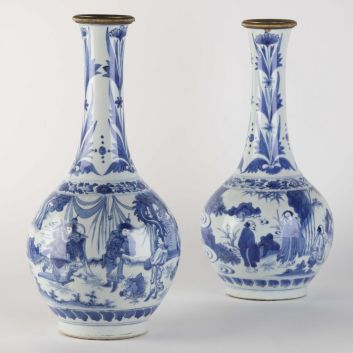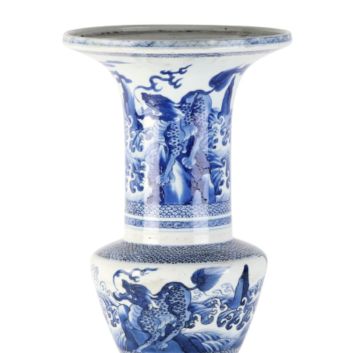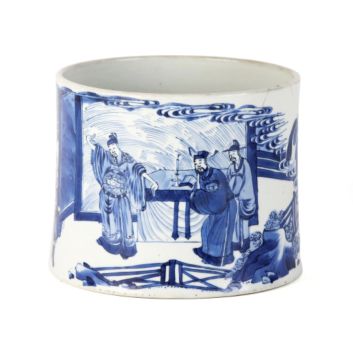Rating and value of Chinese porcelain vases

If you own one or more Chinese porcelain vases, and would like to know their value, our state-approved experts and auctioneers can offer you their expert appraisal services.
Our specialists will carry out a free appraisal of your work, and provide you with a precise estimate of its current market value.
Then, if you want to sell your work, we'll point you in the right direction to get the best possible price for it.
Rating and value of Chinese porcelain vases
Chinese porcelain vases are currently sought-after collector's items. If you own one or more, they may be worth more than you think. On the art market, these objects can fetch very high prices under the auctioneer's hammer.
They are particularly prized, and the price at which they sell on the art market ranges from €30 to €2,015,000, a fairly substantial range, but one that speaks volumes about the value that can be attributed to these objects.
In 2022, a pink porcelain vase from the Jiaquing and Qing dynasties sold for €2,015,000, whereas its estimate was between €150,000 and €200,000. There is therefore considerable upside potential for these objects.
Order of value from a simple work to the most prestigious
Technique used | Results |
|---|---|
Yuan vase | From €30 to €3,640 |
Ming vase | From €40 to €350,000 |
Xing vase | From €200 to €12,920 |
Jiaqing vase | From €200 to €2,015,000 |
Response in less than 24h
Characteristics and diversity of porcelain vases
Chinese porcelain vases, first created in the Han dynasty, soon became highly prized objects.
Excavations in Jingdezhen, famous as the porcelain capital of China, reveal the use of kaolin, the mineral essential for the purity and strength of Chinese porcelain.
Craftsmen developed the technique of high-temperature firing, reaching temperatures in excess of 1,300°C, to produce vases of unrivalled delicacy and whiteness.
Under the Ming dynasty, the art of decoration evolved with the introduction of cobalt blue from Persia.
This pigment, applied under a layer of transparent glaze, gives rise to refined decorations with delicate motifs of flowers, dragons and landscapes inspired by nature and Chinese mythology.
In the 15th century, Europe, fascinated by these exotic pieces, discovered Chinese porcelain thanks to the maritime trade routes established by the Portuguese.
Demand grew dramatically, prompting Jingdezhen craftsmen to modify some of their designs to suit the tastes of European royal courts.
The vases, once destined for imperial palaces and temples, became sought-after export items, decorated with motifs such as hunting scenes, birds and plum blossoms.
This exceptional know-how, jealously preserved by Chinese craftsmen, remained inimitable by Europeans until the 18th century.
Despite attempts at imitation, it was not until the creation of factories such as the one in Meissen in Germany, and Vincennes, which was to become Sèvres in 1756, that Europe was able to partially match the quality of Chinese vases.
Chinese porcelain vases are distinguished by their varied shapes, detailed patterns and incomparable brilliance.
Each piece, whether from the Ming or Qing period, reflects a craftsmanship that combines tradition and innovation, paying tribute to a long history of technical and artistic mastery.
Chinese porcelain, with its delicate finishes and intricate decorations, remains the gold standard in ceramics.
The influence of these vases spread beyond China's borders in the 17th century, when they found their way into European collections.
Long before this, however, Jingdezhen craftsmen had already adapted their creations to satisfy foreign markets, with pieces commissioned specifically for the royal courts of the Middle East and Europe.
Today, Chinese porcelain vases continue to captivate art lovers, whether they are attracted by modern pieces or ancient treasures.
Identifying a genuine antique piece requires specific expertise, capable of distinguishing a replica from an authentic work.
Only a certified expert or auctioneer can certify the origin and value of these vases, revealing their history and cultural importance.
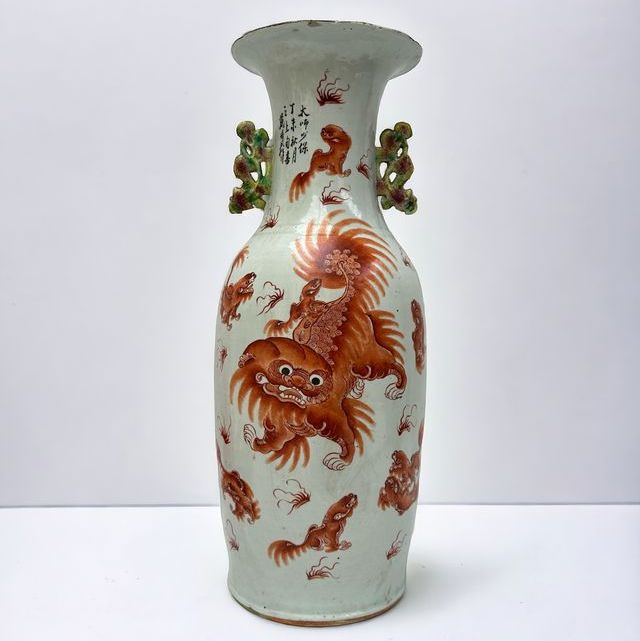
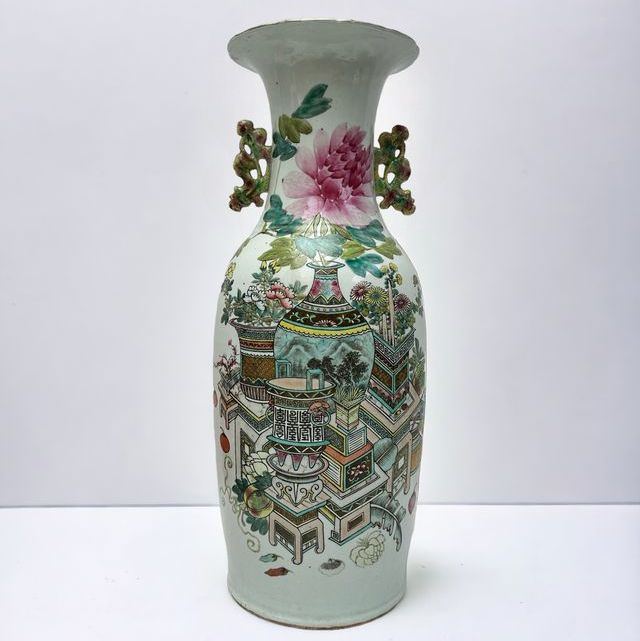
Focus on two Tulip vases (on the cover)
These two tulip vases, dating from the Transition period (1630-1640) or the reign of Kangxi (1662-1722), embody the finesse and complexity of Chinese porcelain. The harmony of the shapes, slender and pure, responds to an aesthetic that is both sober and sophisticated.
The dazzling whiteness of the porcelain, enhanced by the cobalt blue, is an immediate eye-catcher. The technique of underglaze decoration, emblematic of the period, allows for rich, deep nuances.
The carefully painted decor features narrative scenes typical of the Transition and Kangxi periods. Elegantly-dressed figures move about in lush vegetation.
Their carefully stylized postures and slightly exaggerated facial expressions recall popular tales or historical episodes, well known to the literati of the time.
Every detail is meticulously executed, from the folds of the clothes to the floral motifs framing the scene. One senses a desire to capture a moment, to freeze in porcelain the echo of a glorious past.
The floral motifs adorning the necks of the vases, with their delicate curved lines, are characteristic of the production of this period.
We can see the influence of nature, a central element in Chinese art, but also a certain geometric rigor, typical of late 17th-century decor.
The composition is perfectly balanced, playing on the contrast between the lightness of the flowers and the density of the figurative scenes, demonstrating the technical mastery of the Jingdezhen craftsmen.
Under the reign of Kangxi, porcelain enjoyed a new golden age. Imperial workshops vied with each other in virtuosity to meet the growing demand from the court and European elites, who were fond of this "Chinese blue".
These vases, with their deep shades of blue, bear witness to this quest for excellence, where each piece becomes a work of art in its own right. The intense, vibrant shade of cobalt blue is the result of a precise dosage, mastered over centuries.
What's also striking is the fluidity of the drawing. Scenes seem to come alive before our eyes, characters interact, plants flourish.
The presence of landscapes in the settings evokes the tradition of scholarly painting, where nature and man are intimately linked.
The artists of the Transition period, freed from the strict constraints of the court, expressed a creative freedom that heralded the aesthetic innovations of the Kangxi reign.
European influence, evident from the 17th century onwards, can be seen in the choice of more scenographic compositions, but these vases remain fundamentally rooted in Chinese tradition.
Artists drew inspiration from the classics, while incorporating new elements that reflected a growing cultural exchange. Each vase becomes an object of contemplation, a fragment of history frozen in enamel.
Today, these pieces are prized by collectors for their timeless beauty and rarity. Experts scrutinize every detail, from motifs to possible signatures, to identify the exact origin and period of manufacture.
The quality of the porcelain, the finesse of the decoration, the precision of the lines: these are the clues that authenticate these exceptional objects.
This pair of tulip vases, with its elegant form and narrative decoration, embodies the spirit of 17th-century Chinese porcelain.
It recounts both an ancient tradition and a moment of transition, when the art of ceramics opened up to new influences while remaining faithful to its roots.
These vases bear witness to a unique savoir-faire, reflecting an era when art was both refined and daring.
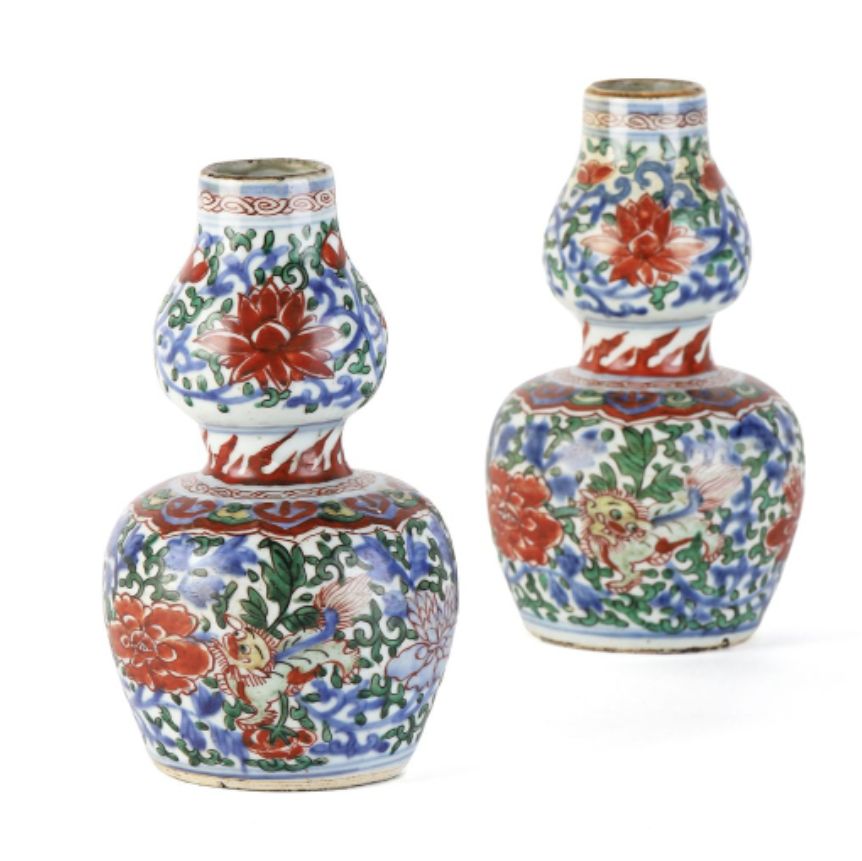
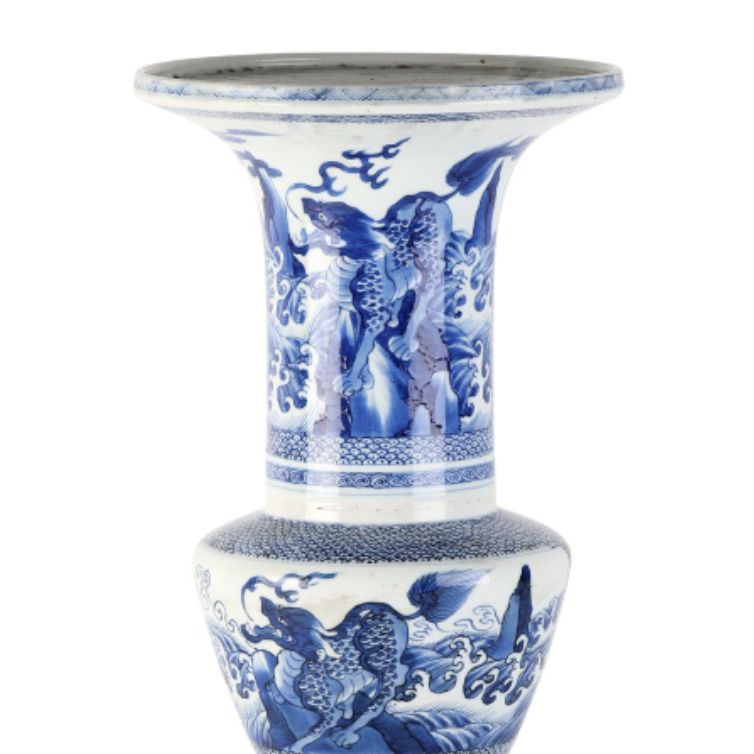
Success of these items on the auction market
Auctioning Chinese vases has many advantages for owners and collectors alike.
This market is an international showcase, attracting buyers from all over the world, which increases the chances of achieving high prices.
Competition between bidders is often fierce, and can push bidding well beyond the estimated value, especially for rare, antique or exceptional quality pieces.
Auctions also guarantee transparency in the process, offering clear information on the provenance of items.
For sellers, it's an opportunity to maximize the value of their investment, while benefiting from visibility with a public of enthusiasts and enlightened connoisseurs.
Knowing the value of a work
If you happen to own one or more Chinese vases, don't hesitate to request a free evaluation using the form on our website.
A member of our team of experts and certified auctioneers will contact you promptly to provide you with an estimate of the market value of your work, as well as any relevant information about it.
If you're thinking of selling your work of art, our specialists will also be on hand to help you find alternatives for selling it at the best possible price, taking market trends into account.
Response in less than 24h
Related topics
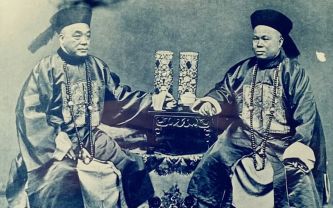
Get a free estimate for your Chinese, Asian,...
Chinese dresses are unique and fascinating pieces of art. To have them appraised by an impartial expert is fundamental.
Read more >
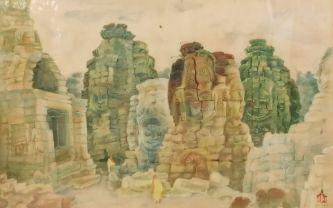
Rating and value of works, paintings by Thuong Lan Nguyen
Thuong Lan, a little-known Vietnamese artist, is nevertheless appreciated at auction. His works are very valuable. Estimated in less than 24h.
Read more >
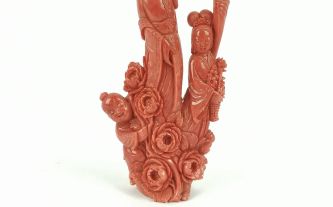
Cote et valeur des bijoux en corail, des coraux de Chine
Corals are precious collectors' items that can be highly valued at auction. 100% free and certified estimate!
Read more >
Secure site, anonymity preserved
State-approved auctioneer and expert
Free, certified estimates

